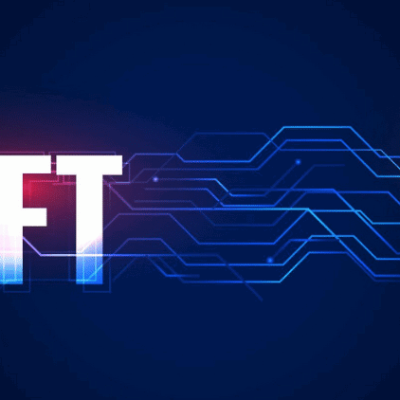Anyone watching crypto lately (late April 2025) has noticed something weird. Bitcoin seems to be finding its feet again, pushing towards $90,000 after a shaky start to the year.
But Ethereum? It’s kind of… stuck. Languishing around $1,600, ETH looks sluggish compared to its big brother, and the ETH/BTC ratio has even dipped to lows we haven’t seen since 2020. So, what gives with the top two cryptos?
People always compare BTC and ETH – they’re the giants, the market movers. But honestly, they were built for totally different jobs. Think of Bitcoin as the first attempt at digital gold, born out of the 2008 mess when trust in banks evaporated.
Ethereum came later, with a wilder ambition: to be a global computer anyone could build applications on using smart contracts. DeFi, NFTs, all that Web3 stuff? That’s mostly Ethereum’s playground.
Where They Came From Matters


Ethereum vs Bitcoin origins
Satoshi Nakamoto, whoever they were, wanted Bitcoin to be peer-to-peer electronic cash. Over time, because it’s hard-capped at 21 million coins and has survived for over 15 years, people started treating it more like a store of value – a digital hedge. Its main job became simply being scarce and secure.
Vitalik Buterin saw Bitcoin and thought, “Cool, but blockchain can do more.” He and the Ethereum co-founders built a platform where code itself could run on the blockchain. These “smart contracts” opened the floodgates for developers to create things like decentralized exchanges, lending protocols, and digital collectibles without needing a central company in charge.
Under the Hood: Chalk and Cheese


Ethereum vs Bitcoin tech
The tech reflects these different goals:
- Engines: Bitcoin uses Proof-of-Work (PoW). It’s like a massive, energy-guzzling competition for computers (miners) to validate transactions. Super secure, proven over time, but slow and costly. Ethereum ditched PoW for Proof-of-Stake (PoS) back in 2022 (The Merge). People “stake” their ETH to secure the network – way more energy-efficient and potentially faster, but it relies heavily on Layer 2 solutions (L2s) like Arbitrum and Optimism to handle real traffic volume.
- Money supply: Bitcoin’s simple: only 21 million BTC ever. Every four years, the “halving” cuts new supply in half, making it predictably scarce. Ethereum doesn’t have a hard cap. But thanks to an upgrade called EIP-1559, it burns a portion of transaction fees. When the network’s busy, more ETH can get burned than created, potentially making the supply shrink (they call it “ultrasound money”). It’s a flexible system designed to balance paying validators and keeping supply in check.
- Flexibility: Ethereum is built for complex code (using languages like Solidity). That’s why it powers thousands of dApps. Bitcoin’s scripting language is much simpler, mainly focused on rules for sending money, though clever tricks like Ordinals and Layer 2s are adding more functionality.
The 2025 Vibe: ETFs, Upgrades, and Regulation


ETFs, upgrades, and regulation
Okay, back to today. The 2024 Bitcoin ETF approvals were huge, driving BTC to new highs before a cooldown in early 2025. Here’s the snapshot for late April 2025:
- Market feel: Bitcoin’s showing resilience ($88k territory), maybe helped by renewed inflation worries making “digital gold” look attractive again. Ethereum, though, is struggling ($1,500-$1,650 range). The weak demand for spot ETH ETFs tells a story – in fact, inverse ETH ETFs (betting against the price) have been some of the best performers this year. Ouch. Bitcoin ETF inflows have slowed significantly from their peak frenzy but remain a massive factor absorbing supply. Macro trends (Fed moves, global trade) are definitely playing a bigger role now than just crypto-native events.
- Tech moves: Ethereum’s got a big upgrade, “Pectra,” scheduled for May 7. What does it do? Mostly helps the helpers – making things cheaper and smoother for those vital L2 scaling solutions by letting blocks hold more “blob” data (thanks, Dencun upgrade!). It also aims to make staking easier (raising the max ETH per validator) and improve wallet usability with a dose of Account Abstraction (letting regular wallets act smarter temporarily). Bitcoin’s focus remains on building out the Lightning Network for faster, cheaper payments.
- Rulemakers: Things are slowly getting clearer. The SEC staff recently suggested basic stablecoins aren’t securities – big for DeFi. That pesky “DeFi broker” tax rule got overturned. Banks got clearer guidance on handling crypto from the FDIC. It’s still a confusing patchwork globally, but maybe slightly less hostile in the US than it once seemed? Crypto firms like Circle are even eyeing bank charters.
Who’s Actually Using This Stuff?
- Ethereum: Still the king of DeFi – think lending (Aave), swapping (Uniswap), and stablecoins (USDT, USDC). Over $45 billion is locked up in Ethereum DeFi protocols, according to DeFiLlama. It’s also the main chain for high-value NFTs and increasingly for tokenizing real-world assets (RWAs) like bonds. But those high Layer 1 gas fees? They push everyday activity onto L2s. Pectra aims to keep those L2s affordable.
- Bitcoin: Its main job is being that digital store of value, reflected in the ETF flows and institutional buys (like MicroStrategy). It’s also used for settling large transactions where finality is key. The Lightning Network is its hope for becoming usable for small, everyday payments, and it is seeing adoption.
- Don’t forget Solana: This competitor made serious noise in early 2025, grabbing huge DEX trading volume thanks to meme coins and super low fees (fractions of a cent!). While ETH still holds vastly more capital, Solana’s speed (claiming 65k TPS) and low costs make it a genuine threat, especially for things like gaming or high-frequency trading. It’s definitely stealing some of ETH’s thunder in terms of user buzz and developer interest lately.
What Keeps Investors Up at Night?
Buying BTC or ETH isn’t risk-free, obviously:
- Wild swings: Prices can drop (or spike) dramatically without warning. Standard crypto volatility.
- Regulation roulette: What if regulators clamp down hard? The big question for ETH is still whether US authorities will deem it a security. Stablecoin rules are also crucial.
- Can they handle growth? Bitcoin L1 is slow; it needs Lightning to work for payments. Ethereum L1 gets clogged easily; it needs L2s, but can they scale enough without becoming a confusing mess?
- Security trade-offs: Bitcoin’s PoW is energy-hungry and relies on mining concentration. Ethereum’s PoS is greener but has potential issues around validator centralization (especially with liquid staking). Plus, all those complex Ethereum apps? More code means more potential for costly hacks.
- The competition: Solana isn’t the only challenger. New L1s and even developments trying to make Bitcoin more programmable could eat into Ethereum’s market share.
Different Paths, Different Bets


Bitcoin vs Ethereum in 2025
So, Bitcoin and Ethereum started near each other but are walking very different paths in 2025. Bitcoin is leaning hard into being digital gold – stable, secure, increasingly integrated with traditional finance. Ethereum is the fast-moving, ever-changing platform trying to become the decentralized backbone for a new kind of internet.
Both are likely to remain hugely important, but they offer different things to users and investors. One is a bet on a new form of money, the other a bet on a new computing platform. Understanding that difference, and the specific hurdles each one faces today, is key to figuring out where they might go next.





